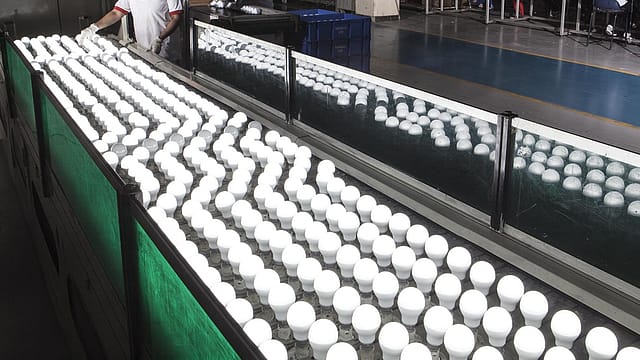Govt revises white goods PLI scheme norms to improve ease of doing business
ADVERTISEMENT

The Ministry of Commerce & Industry has changed the norms governing the production-linked incentive (PLI) scheme for white goods with a view to simplify the scheme's operations as well as to improve the ease of doing business.
This comes after the ministry received various requests and suggestions from the beneficiaries of the PLI scheme for white goods as well as industry associations.
The white goods PLI scheme is to be implemented over a seven-year period, from FY22 to FY29 and has an outlay of ₹6,238 crore.
The following changes have been incorporated under scheme guidelines of PLI scheme for white goods which include air conditioners (ACs) and LED lights: Adoption of the 'Cost-Plus' method in place of comparable uncontrolled price method for calculation of sales prices in case of captive consumption or supplies to group companies. It also required amendment in the definition of 'Arm length'; consider investments in tool room for manufacturing of mould and dyes etc. as eligible investment under capital investment; allowing one more year over and above two years, permitted for informing by beneficiaries about the establishment of the additional manufacturing facility; revision of last date of submission of filing the claim and refund of excess incentive by the beneficiary on account of discrepancy between statutory compliance and records provided at the time of filing of claim(s), if any and rollover of bank guarantee among others.
The PLI Scheme for white goods is designed to create a component ecosystem for the air conditioners and LED lights industry in India and make India an integral part of the global supply chains. The scheme extends an incentive of 6% to 4% on a reducing basis on incremental sales for a period of five years subsequent to the base year and one year of the gestation period, the commerce ministry says. Domestic value addition is expected to grow from the current 15-20% to 75-80%.
January 2026
Netflix, which has been in India for a decade, has successfully struck a balance between high-class premium content and pricing that attracts a range of customers. Find out how the U.S. streaming giant evolved in India, plus an exclusive interview with CEO Ted Sarandos. Also read about the Best Investments for 2026, and how rising growth and easing inflation will come in handy for finance minister Nirmala Sitharaman as she prepares Budget 2026.
In line with the Prime Minister's clarion call for 'Atmanirbhar Bharat' to bring manufacturing to the centre stage and emphasise its significance in driving India’s growth and creating jobs, the PLI Scheme for White Goods for the manufacture of components and sub-assemblies of ACs and LED Lights was approved by the Union Cabinet chaired by the Prime Minister on April 7, 2021.
The scheme was notified by the Department for Promotion of Industry and Internal Trade (DPIIT) on April 16, 2021.
The scheme is operational now. Out of 64 selected beneficiaries, 15 beneficiaries, who have opted for the gestation period up to March 31, 2022, have started commercial production. The rest of the beneficiaries who have opted for the gestation period up to March 31, 2023, are at different stages of implementation.
For air conditioners, companies will be manufacturing copper tubing, compressors, control assemblies, heat exchangers and BLDC motors among other components. Similarly, for LED lights, LED chip packaging, LED drivers, LED engines, LED light management systems and metallised films for capacitors etc. will be manufactured in India. The scheme is expected to generate around 2 lakh direct and indirect jobs, according to the ministry.
